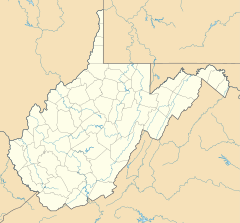Bassipterus
Bassipterus ("wing from Bass") is a genus of eurypterid, an extinct group of aquatic arthropods. Bassipterus is classified as part of the family Adelophthalmidae, the only clade within the derived ("advanced") Adelophthalmoidea superfamily of eurypterids. Fossils of the single and type species, B. virgnicus, have been discovered in deposits of the Late Silurian age in West Virginia and Maryland, United States. The genus is named after Bass, where most of the fossils have been recovered.
Bassipterus was a well-known basal ("primitive") genus that was distinguished from the more derived adelophthalmids by the specialization of its genital operculum (a plate-like segment which contains the genital aperture) and its long and narrow eyes, being Pittsfordipterus's closest relative.
Bassipterus is almost completely known, with the first to fifth pair of limbs and type B genital appendage being the only unknown body parts. The body had a lanceolate (lance-shaped) and streamlined shape. The prosoma ("head") was long, rounded and tray-shaped. The carapace (dorsal plate of the head) was surrounded by a narrow marginal rim, with eyes placed frontally, placed intramarginally (within the margin) and unusually long. PE 6139, a 15.2 millimeter (0.6 inch) long carapace, had eyes 4.5 mm (2 in) long and 2.2 mm (0.1 in) wide. The ocelli are preserved, and were placed in the center of the carapace, immediately behind the eyes. The metastoma (a large plate part of the abdomen) was long, truncated (shortened as by cutting it) at the base and cordate (heart-shaped) in the anterior (frontal) part. One specimen preserves a metastoma of 8.3 mm (0.3 in) in length and 5 mm (0.2 in) in width.[1]
Of the appendages (limbs), the swimming legs (sixth pair of appendages) are the only known ones. These were of Hughmilleria-type (with enlarged seventh and eighth leg segments and the ninth very small[2]), but in this species, it was serrated along the anterior edge of the sixth to seventh joints. The terminal joint was a sharped spur. The mesosoma (comprising body segments 1 to 6) was tapered, with the first tergite (dorsal part of the segment) considerably narrower than the rest. The metasoma (comprising segments 7 to 12) followed the tapering of the mesosoma and ended in a long dirk-like telson (the posteriormost division of the body). The telson was smooth in the ventral part, but carinated (with a keel) dorsally towards the end, which was a very sharped point. The specimen PE 6208 had a 32.5 mm (1.3 in) long telson. The ornamentation in Bassipterus is well known and developed. The carapace was covered by triangular scales. The tergites and abdominal plates had mucrones (sharped points) typical of Adelophthalmidae, but these were considerably larger and more prominent than in related genera. In some places, the mucrones touched each other and formed a rhombic ornamentation, while in others, they were so elongated that they resembled the linear striations present in the more derived ("advanced") genus Adelophthalmus.[1]

